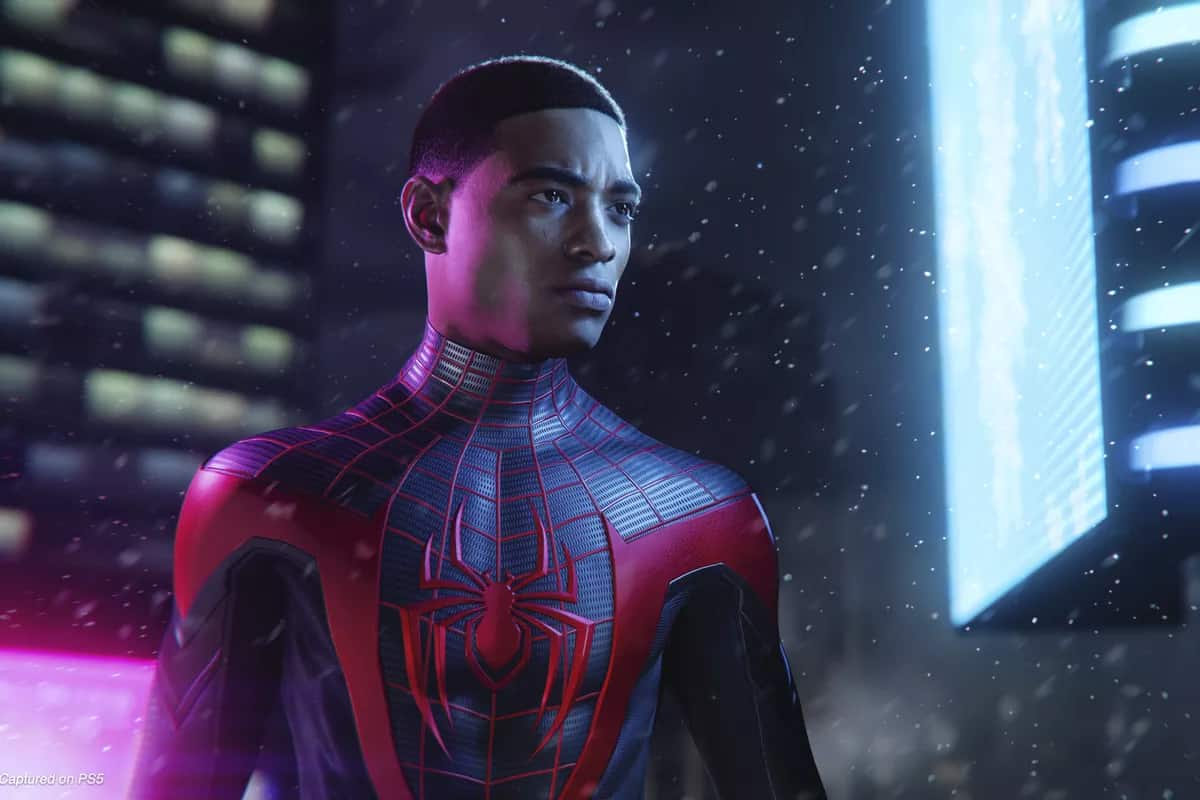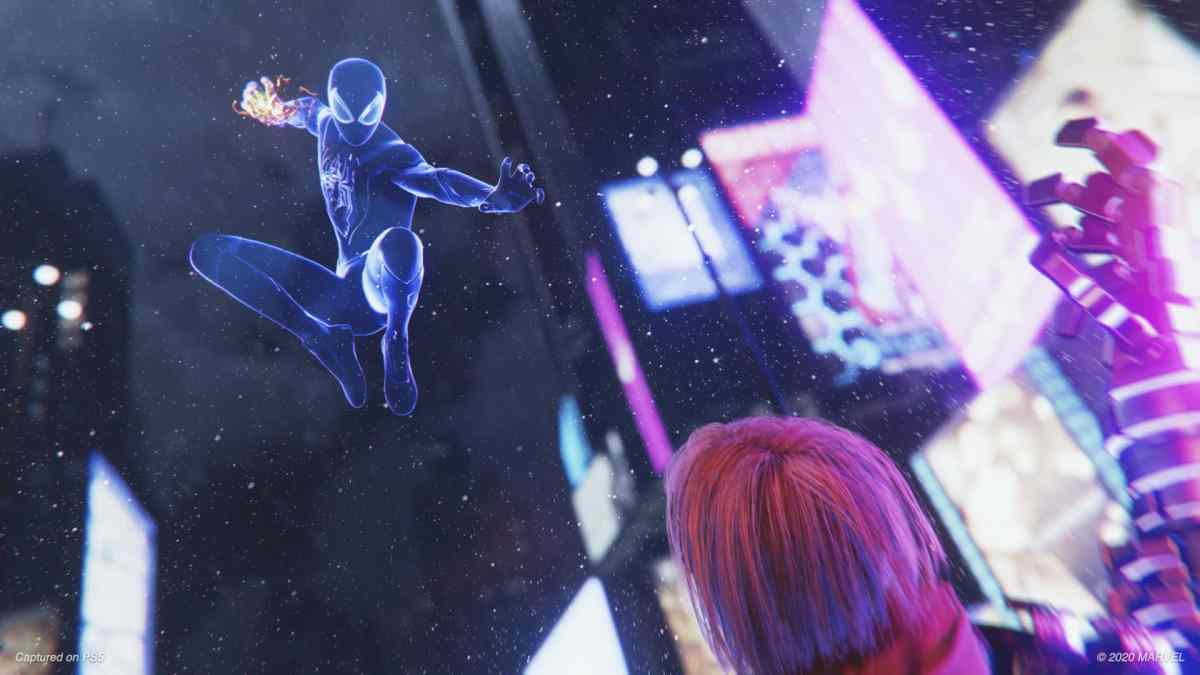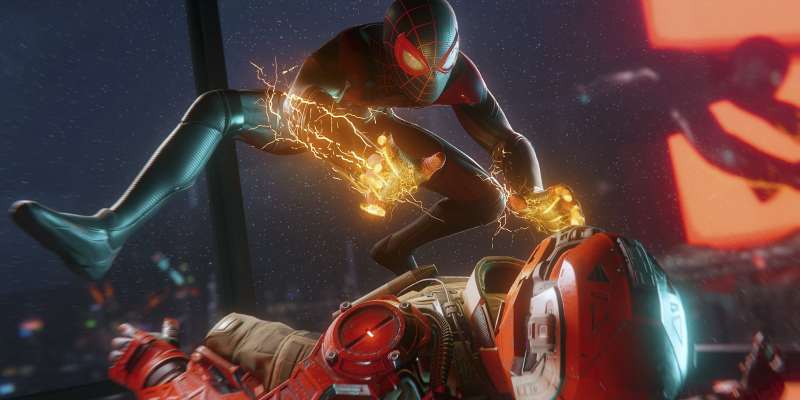PlayStation 5 launched in the U.S. on Nov. 12 with an extremely strong lineup of incredibly diverse games. Leading the charge was Spider-Man: Miles Morales, Insomniac Games’ follow-up to 2018’s massively successful Spider-Man for PlayStation 4. Miles cradles the generational gap, pushing the PS4 to its limit while simultaneously giving us a glimpse at the PS5’s potential with incredible lighting, 60 FPS, and near-instant load times.
But apart from all of this, the thing that stands out to me in this latest adventure into the Spider-verse is how Insomniac has taken its formula from the original game and tightened up every aspect into a slim and focused adventure. The result is a much shorter game by all accounts, but what it lacks in breadth, it more than makes up for in heart. I see this as a continuation of something Sony’s been experimenting with for the better part of a decade — and one that we might see a lot more throughout this new generation.
When it was first revealed, there was a lot of internet chatter about how Spider-Man: Miles Morales was nothing more than full-priced DLC. I find most of that discussion to be a reductive and boring means of unduly transforming art into a product, but the fact remains that this game is absolutely shorter than 2018’s Spider-Man. If you couple in all of the original game’s DLC, I’d say that at under 10 hours, Miles Morales is about a quarter of the length of Spider-Man. And I love it for that.
However, I think that Miles Morales thrives exactly because it feels like a “smaller” version of 2018’s Spider-Man, as well as a pitstop on the way to the inevitably PS5-exclusive Spider-Man 2 or whatever it ends up being called. After literally saving NYC / the country / the world at the end of the original game, it makes sense that the tension needs to be brought back down to a calmer level. Focusing on Miles and the intimate relationships he has with his friends, family, mentors, and Harlem neighborhood results in a tighter narrative for this new hero, while never feeling like an origin story, which we’ve had more than enough of when it comes to webslingers.

While you still have the full Manhattan map from the original at your disposal from the outset, there are far fewer sidequests and collectables this time around. Instead, everything you do feels like it actually means something to both Miles’ journey and the progression of the game itself. I loved that they distilled some of the more banal fetch quests from the original, like swinging all around town to find lost pigeons, into a single side story that pokes fun at Peter’s chores. The tighter nature also means that Miles levels up at a much faster pace, allowing you to unlock new suits, gear, and abilities after nearly everything you accomplish, which quickly grows the amount of verbs you have at your disposal in combat, stealth, and exploration.
Everything about Spider-Man: Miles Morales’ story felt incredibly personal. The side quests actually matter to Miles and his community. From figuring out who flooded the Harlem F.E.A.S.T. location, to finding a shopping crate of goods that were stolen from local bodegas and barber shops, to collecting sound samples from across the city for Miles’ Uncle Aaron that double as a reflection of his relationship with Miles’ late father, it reaffirms that you don’t need to save the whole world in order to be a superhero. I feel like I got to know Harlem and the folks who call it home far deeper than I did with any specific neighborhood in the original game.
The game is also filled with great quiet moments that allow you to explore a lived-in space at your own pace. I loved revisiting Miles’ apartment throughout the story and seeing how he and his mom slowly unpack their belongings. Or a later flashback where I got to wander through an Oscorp science exhibit and get a lot of great insight into Miles and his pal Phin. Even the conversations you have in-between missions with your pal / eye-in-the-sky Ganke Lee, like when he excitedly talks about how he’s super into the winter break reading assignment of Jane Eyre, continually remind us that Miles is still a kid and hasn’t been doing this his entire life.

But I think the thing that stands out to me most about Spider-Man: Miles Morales’ shorter, tighter story is where it fits in Sony’s first-party history. This certainly isn’t the first time we’ve seen an auxiliary adventure set in the world of a larger experience. On PS4, we saw both Infamous First Light from Sucker Punch Productions and Uncharted: The Lost Legacy from Naughty Dog, which were 10-hour-long smaller, more intimate stories that fleshed out corners of their larger worlds. This practice also keeps franchises fresh in people’s minds, as opposed to having to wait a full five years between installments. This has me curious as to whether or not Sony will continue this trend going forward with some of its other major franchises.
We know Horizon Forbidden West and a new God of War are coming. But what we don’t know is whether or not they’ll be the size and scope of true sequels like Uncharted 4 or more along the lines of The Lost Legacy. The same goes for whatever comes next for the Ghost of Tsushima franchise, which we’ll undoubtedly see more from given its massive critical and commercial success. And of course, it makes me wonder if we’ll see more from either the Uncharted or The Last of Us universes and what form those experiences might take.
At the end of the day, Spider-Man: Miles Morales feels like a movie, where the original game unfolded like a sprawling season of television. And given that we got this new experience only two years after the first game, that difference makes complete sense to me. Having this corner of the Spider-verse fully fleshed out in just a short 10 hours makes me all the more excited for what Insomniac has in store for the next great adventure.
